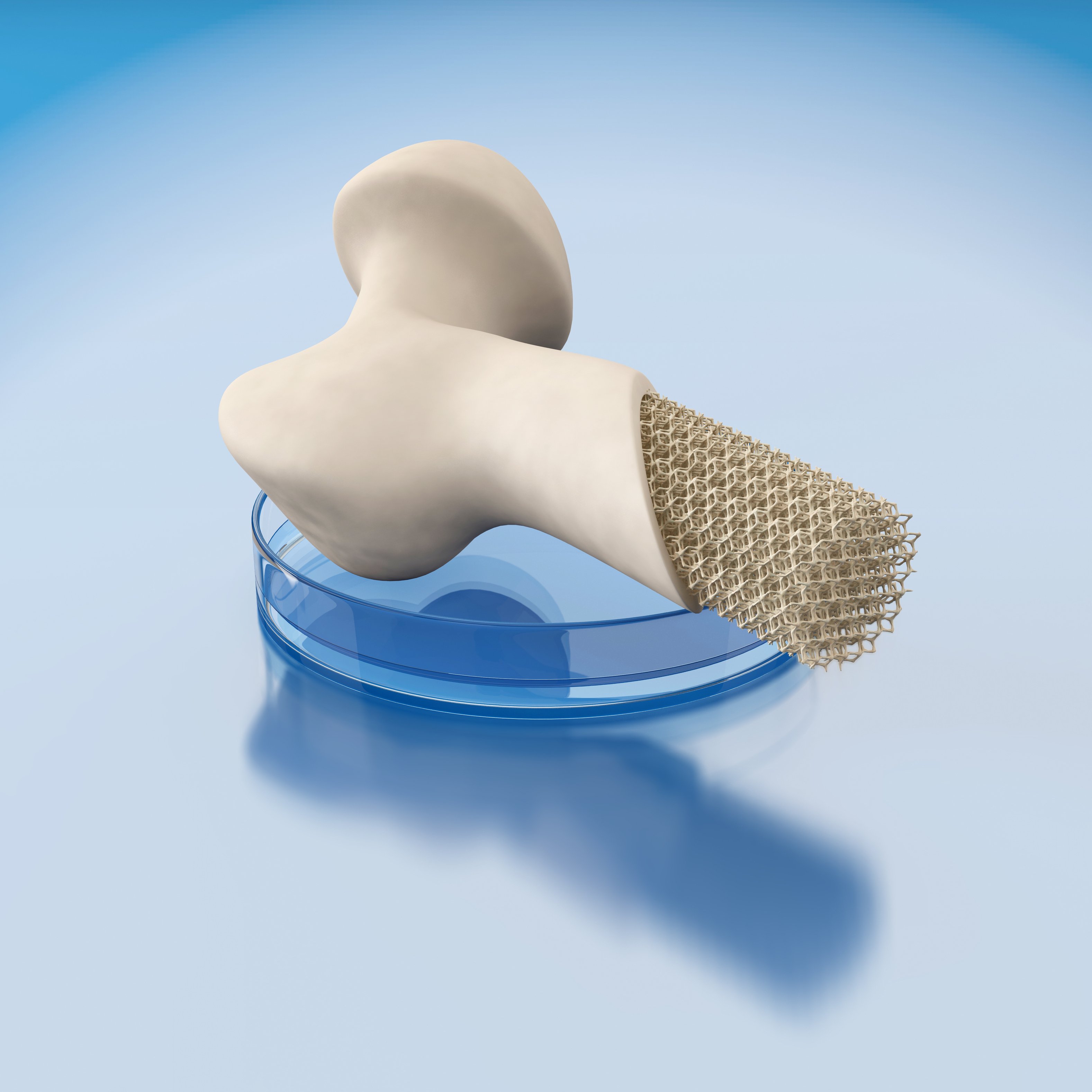Additive Manufacturing Is Disrupting Healthcare—Are You Ready?
Once used primarily for prototypes and research and development applications, additive manufacturing (known more commonly as 3D printing or industrial 3D printing) is increasingly being used for end-use parts.
Industries ranging from aerospace to automotive are harnessing the power of this innovative technology to transform how products are designed, produced, and serviced. But perhaps some of the most exciting use cases for 3D printing are in the medical and dentistry sectors.
Vision Research Reports projects that the global market size of 3D printing in medical applications will surpass $5.89 billion by 2030 as demand for customized 3D printing solutions accelerates.
What makes 3D printing such a suitable technology for medical and dentistry applications? How are these sectors leveraging additive manufacturing today—and what will the future bring?
Professor John Hart, lead instructor of MIT xPRO’s Additive Manufacturing for Innovative Design and Production course, shared his insights with us in a recent interview.
Benefits of Additive Manufacturing in Healthcare and Dentistry
The primary benefits of additive manufacturing in healthcare and dentistry are as follows:
1. Customization and personalization
“Additive manufacturing provides a way to produce customized and personalized parts with a much more streamlined workflow than traditional manufacturing methods,” Professor Hart explains.
Unlike injection molding and CNC machining, 3D printing is an on-demand process that doesn’t require specific molds or tools, allowing for cost-effective mass customization.
2. Performance
3D printing is known for its ability to achieve complex and intricate geometries—geometries that best align with the needs of the human body. “If you look up 3D printed spine implants, you’ll see they are made up of fine lattice structures. The bone cells grow into the lattice structures so that the implant becomes one with the bone over time,” Professor Hart says. These lattice structures would be impossible to achieve with traditional manufacturing.
“The increase in performance means the patient heals faster, becomes stronger, and has a better quality of life,” says Professor Hart.
3. Materials
Professor Hart notes that there are innovative materials that can be 3D printed that can’t be processed traditionally. For instance, thermoplastics like PLA, ABS, and PEEK, which are common in 3D printing, are strong and lightweight—two desirable characteristics for medical implants.
4. Cost
Additive manufacturing in healthcare simplifies the supply chain to reduce overall costs associated with producing end-use products. An implant that would require multiple steps in a traditional manufacturing process, for example, requires much fewer steps with 3D printing due to the on-demand nature of the technology.
Current Use Cases for Additive Manufacturing in Healthcare and Dentistry
Though the potential for additive manufacturing in dentistry and healthcare hasn’t fully been realized, current use cases demonstrate what’s possible with this technology.
1. Dentures, crowns, fixtures, and aligners
“More and more dentists are using 3D printed dentures or 3D printed crowns or 3D printed fixtures that aid in dental surgery,” Professor Hart explains. But the most enticing application of additive manufacturing in dentistry is the creation of aligners such as Invisalign.
Aligners are mass-customized products, each individually designed using software based on a scan of the patient’s mouth. “Aligners are a great example of a technology enabled by 3D printing that involves a real end-to-end digital thread—from the patient’s digital data all the way to the artifact used for treatment,” Professor Hart says.
2. Orthopedic implants
A growing number of orthopedic implants, such as spinal implants, are made using 3D metal printing. “3D printing allows you to create complex geometries with fine lattice structures using materials that are suitable for implantation into the body,” Professor Hart explains. “Many major medical implant manufacturers have made big investments in 3D printing and initiated partnerships with 3D printing companies to develop these solutions.”
3. Surgical planning
“When a surgeon or a team of physicians is planning a very involved surgical procedure, they’ll commonly use 3D printing to create a physical model based on scanned patient data,” Professor Hart shares. “Humans are visual and tactile creatures who like to be able to gather around a model and plan their precise course of action.”
Future Use Cases for Additive Manufacturing in Healthcare and Dentistry
As healthcare and dentistry become more personalized, there will be additional use cases for additive manufacturing. Here’s what Professor Hart expects to see in the years to come:
1. Broader adoption of 3D printed medical implants
While many orthopedic implants are 3D printed already, Professor Hart projects that the number will continue growing. “At some point in the future, I think most if not all metal implements that go into the human body will be made at least in part by 3D printing,” Professor Hart says.
2. Customization for specialized cases
Though customization is a significant benefit of additive manufacturing in healthcare, Professor Hart notes that isn’t necessary for all medical implants. Hip implants, for example, are available in standard sizes suitable for most patients. “There’s not necessarily value in doing just a little bit of customization. It’s most valuable when it’s for a really specialized case,” Professor Hart explains.
One such specialized case could involve a patient with a complex facial fracture who needs a customized plate installed to repair their jaw. 3D printing could be used to create this specific, complex part with much better outcomes than using a standard part.
Healthcare Leaders Must Facilitate the Research and Adoption of Additive Manufacturing
As additive manufacturing continues to disrupt healthcare, industry leaders who seek to stay ahead of the curve must have a plan for harnessing the power of this innovative technology.
Professor Hart recommends educating engineers and business leaders about 3D printing capabilities and determining how 3D printing fits within your organization’s product roadmap.
If you’re interested in learning from Professor Hart directly, consider enrolling in Additive Manufacturing for Innovative Design and Production.



